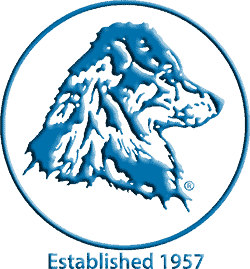THE AUSTRALIAN SHEPHERD CLUB OF AMERICA
2023 Statement on Bobbed and Docked Tails
Introduction: The Australian Shepherd Club of America (ASCA)® was established as the parent club for the breed in 1957. It is the largest breed-specific club in the United States, also having chapters in nine other countries around the world. ASCA members are welcome to share this statement with breeders, dog owners, veterinarians, policymakers, and other interested parties.
Background: A tail not over four inches in length long has been recognized by ASCA and other organizations as part of the Aussie breed standard. When the result of genetics, this is referred to as a “bobbed” tail. When the result of surgical intervention, it is instead a “docked” tail.
The docking of dogs’ tails has become the subject of increased debate. In some places, laws have been adopted setting a maximum age at which docking may be performed; elsewhere, the level of veterinary care to be given when performing docking is specified by law. In Europe, there is a trend toward outlawing the docking of dogs’ tails. The American Veterinary Medical Association opposed docking done for cosmetic reasons, while recognizing that breeds such as Australian Shepherds may have short tails solely from genetics (i.e., bobbed tails). By contrast, the American Kennel Club adopted a 2008 statement declaring tail docking an acceptable practice that can be “integral to defining and preserving breed character and/or enhancing good health,” with the additional notation that appropriate veterinary care should be provided for the practice.
Statement: After consideration of the varied interests of breeders, owners, and others who support the welfare of Australian Shepherds, ASCA adopts the following position statement:
- Efforts to outlaw the docking of dogs should not be overextended to prohibit the participation in competition of dogs whose tails are bobbed (i.e., that are short purely as a result of genetics). Otherwise, bobbed dogs and their owners would suffer discrimination for an inherited trait that causes the dogs no harm.
- Where the law allows the docking of a dog’s tail, and the owner chooses to undertake it, the docking should be conducted in close coordination with a Doctor of Veterinary Medicine to prevent the dog from suffering in the process.
- Restrictions on the age at which docking can be done and rules requiring related veterinary care can offer a reasonable alternative to banning docking.
- As our members have a variety of views about the appropriateness of docking, we conclude that the ultimate decision on whether or not to do it is best left to individual owners. They are in the best position to weigh any associated risks/benefits for their dogs, in consultation with the dogs’ medical care providers.
Adopted by the ASCA Board of Directors this ___________________________, 2023.
Rick Gann, ASCA Board President
Attest:
Kalla Jaco, ASCA Executive Secretary
